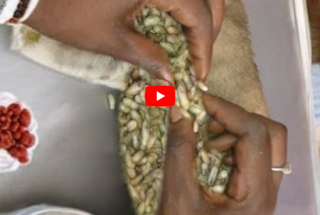
Can a Botfly Kill a Dog? Understanding the Risks and Treatment
If you’ve ever seen a strange lump on your dog’s skin that seems to move, it can be both alarming and confusing. In many cases, such a lump could be caused by a botfly larva, also known as a Cuterebra. While these parasites are relatively rare, they can cause serious health problems if not treated properly. But can a botfly actually kill a dog? Let’s look closely at what botflies are, how they affect dogs, and what you can do to protect your furry friend.
What Is a Botfly?
Botflies (genus Cuterebra) are parasitic insects that target small mammals such as rabbits, rodents, and occasionally cats or dogs. The adult botfly doesn’t bite or feed on blood. Instead, it lays eggs near the burrows or paths of animals. When a curious dog sniffs or brushes against the contaminated area, the tiny larvae can attach to its fur and eventually burrow into the skin.
Once inside, the larva creates a small hole in the skin to breathe and continues to grow for several weeks. This stage is known as a warble, and it often appears as a swelling or cyst-like lump that can move slightly as the larva shifts.
How Dogs Get Infected
Dogs most commonly get infected with botflies during late summer and early fall, when adult flies are active.
Here’s how the process typically happens:
- A botfly lays eggs on grass or in animal burrows.
- The eggs hatch into larvae when they sense the warmth of a nearby animal.
- The larvae attach to a dog’s fur and enter the body through the nose, mouth, or small skin wounds.
- They migrate under the skin and settle in a specific area — often around the head, neck, or shoulders.
Because dogs are naturally curious and like to explore burrows, they are at higher risk of exposure than indoor pets.
Symptoms of Botfly Infestation in Dogs
At first, it may be difficult to tell that your dog is hosting a botfly larva. However, as the larva grows, symptoms become more noticeable. Common signs include:
- A raised, swollen lump under the skin (often with a small breathing hole)
- Oozing or discharge from the lesion
- Pain or sensitivity when the area is touched
- Excessive scratching or licking at the spot
- Sudden sneezing or nasal discharge (if larvae enter through the nose)
- Lethargy, loss of appetite, or fever in more severe cases
If a larva migrates to internal organs such as the brain, eyes, or respiratory tract — a rare but serious condition known as cerebrospinal cuterebriasis — symptoms can include seizures, disorientation, or breathing problems.
Can a Botfly Kill a Dog?
The simple answer is yes — but very rarely. Most botfly infestations are limited to the skin and are not life-threatening when treated promptly. However, complications can occur if:
- The larva migrates internally to vital organs like the brain or lungs.
- The wound becomes infected after the larva exits.
- The dog has a severe allergic reaction or weakened immune system.
In these rare cases, a botfly infestation can become life-threatening. Dogs that develop neurological symptoms due to larval migration need immediate veterinary care, as untreated cases can result in permanent damage or even death.
So while a typical botfly wound won’t kill your dog, neglecting it or trying to remove the larva at home can lead to serious harm.
What to Do If You Suspect a Botfly
If you notice a lump with a small hole or see movement under your dog’s skin, do not squeeze or attempt to remove the larva yourself. This is extremely dangerous — crushing the larva can cause it to release toxins that lead to severe inflammation or infection.
Here’s what to do instead:
- Keep the area clean and prevent your dog from licking or scratching it.
- Visit your veterinarian immediately. A vet can safely remove the larva using sterile tools and ensure the entire parasite is extracted.
- Antibiotics or anti-inflammatory medication may be prescribed to prevent infection and reduce swelling.
- Follow-up care is essential. Keep the wound clean and monitor it until it fully heals.
If your dog shows neurological symptoms (like seizures, head tilting, or loss of balance), the vet may recommend imaging tests such as MRI or CT scans to locate any migrating larvae.
Prevention Tips
The best way to protect your dog from botfly infestations is to limit exposure to environments where botflies lay their eggs. Here’s how:
- Avoid letting your dog explore rodent burrows or areas with tall grass, especially in late summer and early fall.
- Regular grooming helps you detect unusual bumps or wounds early.
- Keep your yard clean and reduce rodent activity around your home.
- Use veterinarian-approved flea and parasite prevention treatments, which can sometimes deter botfly larvae.
- Inspect outdoor dogs daily, particularly around the face, neck, and head.
Early detection and prompt veterinary attention are the best defenses against complications.
Final Thoughts
So, can a botfly kill a dog?
In most cases, no — botfly infestations are treatable and rarely fatal. However, if ignored or mishandled, they can lead to serious infections or internal complications that put your dog’s health at risk.
The key is awareness and prompt action. If you ever find a suspicious lump on your dog, resist the urge to treat it yourself. Contact your veterinarian as soon as possible. With proper care, your furry friend will recover quickly and return to their happy, healthy self.



